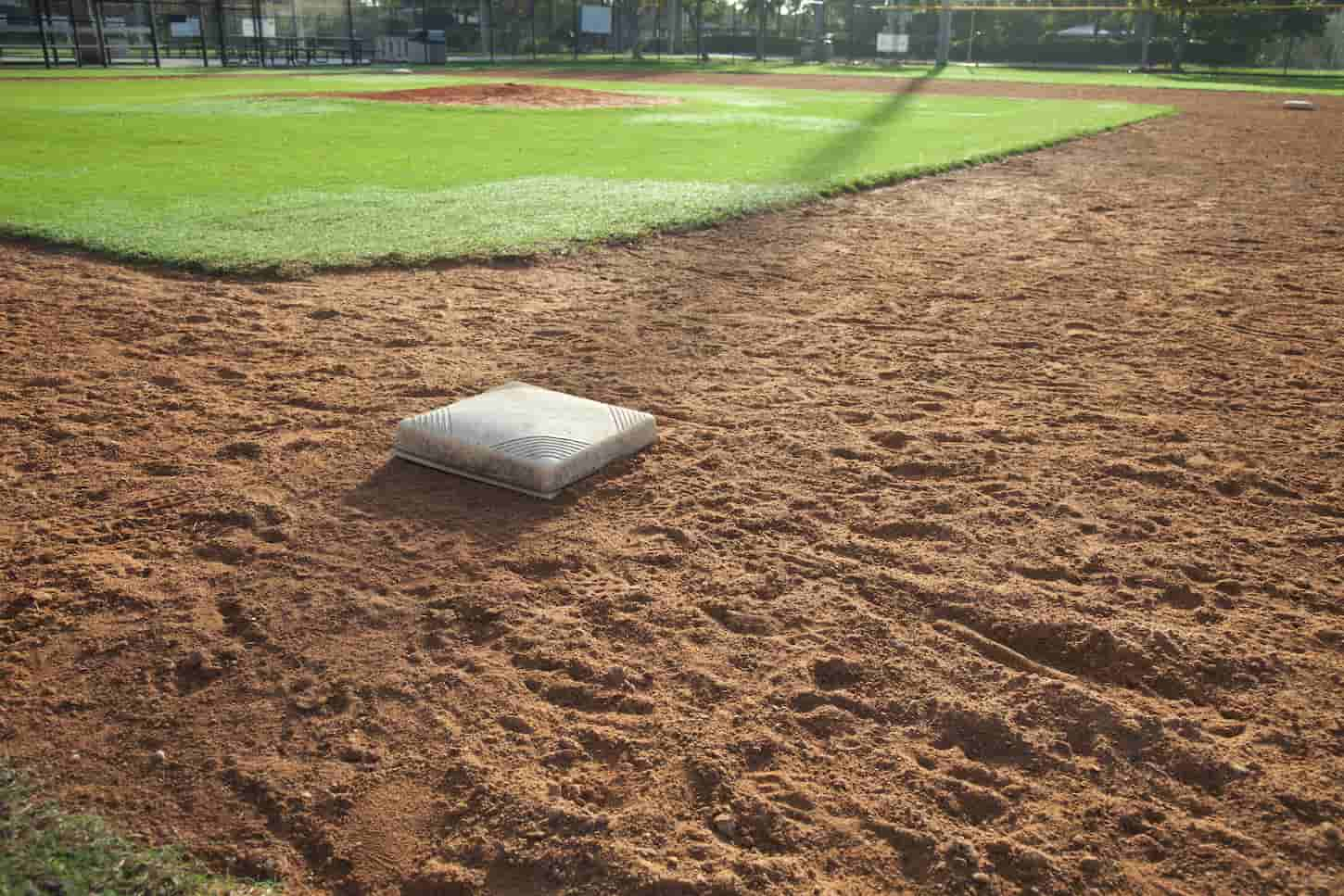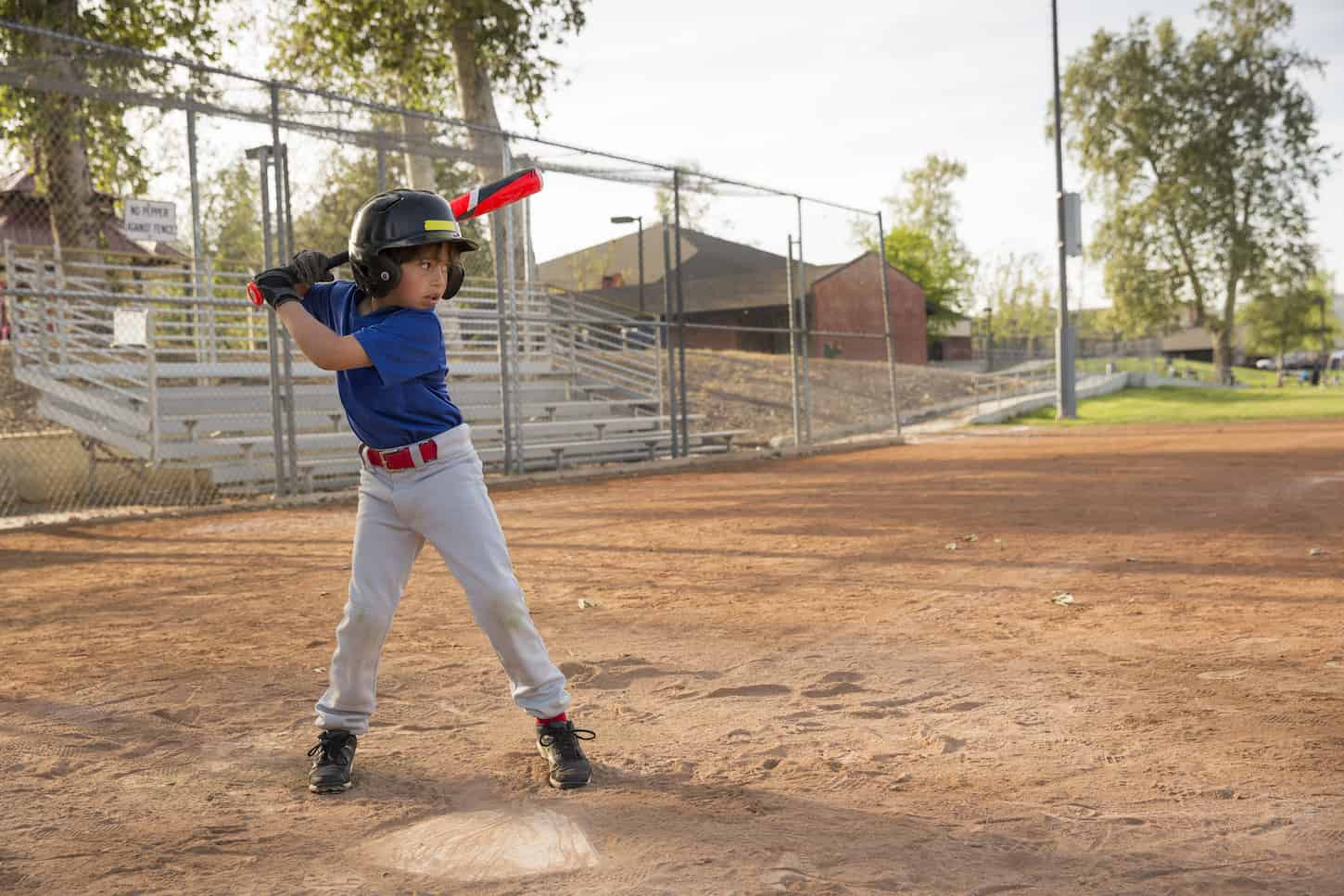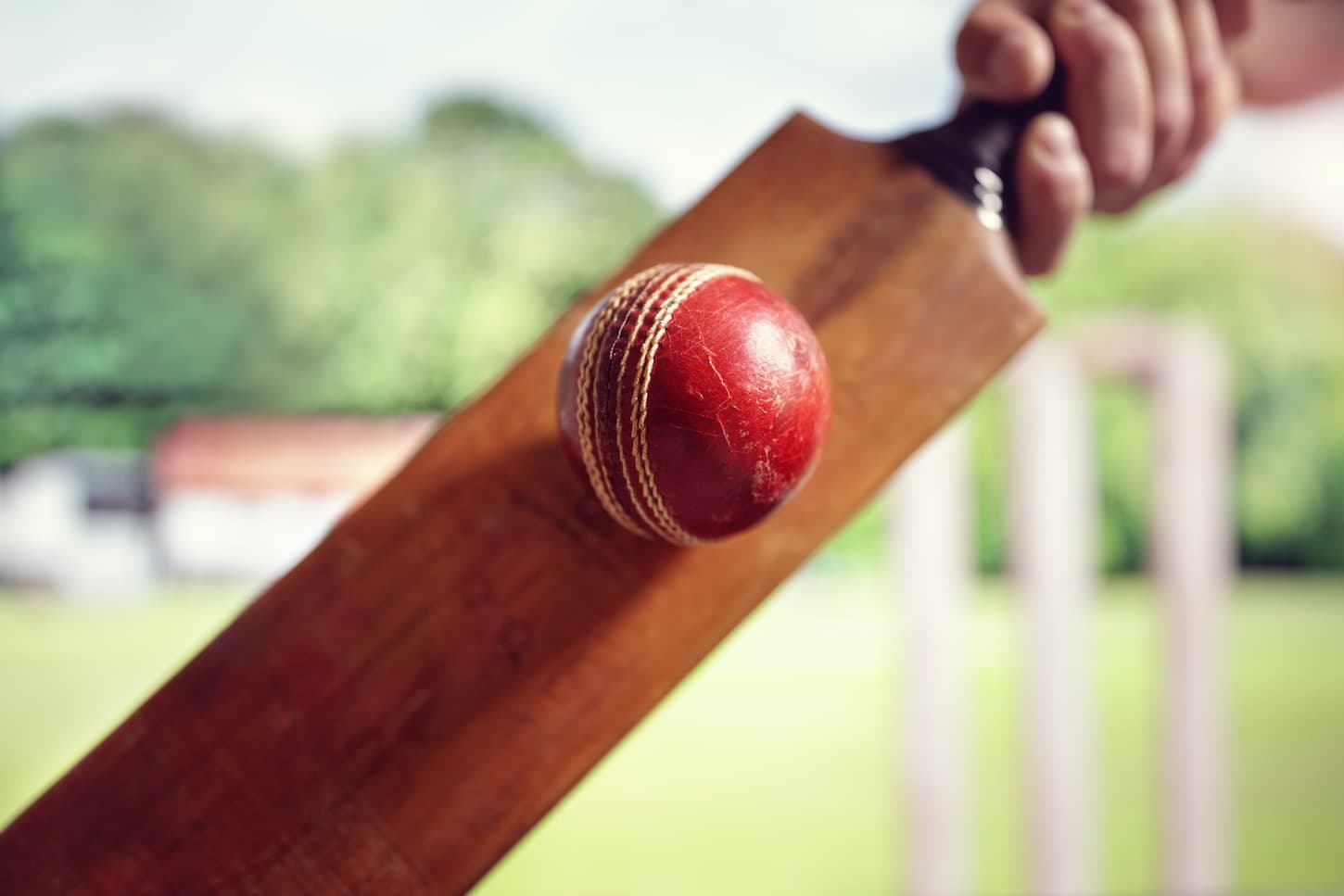If you’re reading this from the US, you’ll probably be much more familiar with baseball than cricket. However, did you know that cricket is probably the bigger sport globally? Even so, is baseball easy for cricketers?
Baseball may be easier for naturally talented athletes, but it isn’t necessarily easier for cricketers. Due to the sports’ inherent differences in play and tactics (despite their similarities), switching from cricket to baseball (or vice versa) isn’t a guaranteed or easy path to being a star player.
In fact, cricket’s huge following across English-speaking nations and Asia means it regularly features in lists of the world’s most popular sports. Despite its reputation for being a long and complicated game, recent years have also seen new formats such as T20 that bring fast-paced excitement to the sport!
If you’re thinking of a sport for your kids, you might be torn in choosing between these two sports, as after all they do seem a little similar at first glance… We’ve put together a little comparison for you to help you decide!


Is Baseball more Difficult than Cricket?
It’s not fair to say that one sport is more difficult than another. Both cricket and baseball use similar fundamental skills, and at a high level are both complex challenging sports!
The fundamentals of these sports are similar (throwing a ball, hitting it, and running). Once you get more into it, though, there’s a lot more difference. The pitching and batting techniques are quite unique to either sport, and both sports also have their own tactics and specializations.
Because of these differences, it can be a bit confusing for any athlete who wants to change between the sports, and some aspects are suited more to some than others!
Don’t worry though, we’ll talk you through some key differences of the sport, and it’s up to you to decide whether they suit you or not. Here’s a breakdown of some of the most obvious ones:
Difference #1: The language
Both sports have a lot of technical terms, and they’re not always the same across the sports!
For example, while we call a throw of the ball a ‘pitch’ in baseball, in cricket this actually means the field.
‘Pitching’ in baseball is referred to as ‘bowling’ in cricket, and ‘howzat’ is a popular shout in cricket (I’ll explain that one later, in case you’re curious). Thankfully the words for bat and runs always stay the same, though!
Every fielder in both sports has their own name too, so there’s a lot to learn! The equivalent to baseball’s backstop, for example, would be known as the ‘wicket keeper’, and there are WAY more positions out there.
Difference #2: The length
For some people, baseball can seem a pretty long sport. After all, a game can take up a whole afternoon. However, cricket can go way longer, with some international test matches taking up to five days!
Most cricket and baseball games on an amateur level, however, are much shorter. Despite that, f you’re thinking of taking up either (or getting your kids to) then you’ve got long afternoons to look forward to with barbecues at the side of the field.
Personally, I love to really get into the atmosphere, soaking up a little sun while enjoying the sport!
Difference #3: The field
The field (or pitch, in cricket’s case) of each sport is a bit different. In baseball, the batter runs around four bases, which are set out on the diamond. A cricket pitch is round, with the batsmen able to hit the ball in any direction, but running between two ‘wickets’ set up on either side of a small strip in the center of the pitch.


Difference #4: The equipment
Traditional cricket equipment is a little heftier than that of baseball. The larger wooden bat and dense wooden ball can be a little unwieldy (not to mention painful if you catch it wrong!), and will take a fair amount of strength to swing powerfully.
Cricket batsmen also wear quite a lot of protection, with leg-high pads to protect them from the ball as well as helmets and padded gloves.
Baseball batters kit out with helmets to protect from the ball, but other than that don’t wear protective gear, so it’s a little easier to run fast. The thinner bat is also easier to swing fast (but trickier to hit the ball with!).
Difference #5: Gameplay
The actual play of the game is what makes the two sports so different. There are loads of nuanced differences between the two sports, so I’ll just break down three of the most obvious ones: scoring, running, and getting caught ‘out’.
Difference #6: Scoring
Scoring is pretty different in the two games.
In baseball, your team scores one run for every time a batter makes it round all four bases, back to the home base without getting ‘out’ (more about this in a moment). Scores are recorded as the number of runs.
In cricket, hitting the ball all the way to the boundary line (which marks the edge of the pitch) will score you four or six runs, dependent on whether the ball hit the floor before leaving the pitch. You can also score runs by running to the alternate wicket. Each batsman stays in until they are caught ‘out’.
Scoring can sound pretty complex in cricket. You might hear a phrase such as ‘fifty for six’ for the score. This would mean that fifty runs have been scored, with six batsmen deemed out of play.
Difference #7: Running
While in baseball you run round the bases, in cricket you alternate between the two wickets. Running each way will score you one run. However, should you score a 4 or 6, you’ll just walk once, to alternate the batsman.


Difference #8: Getting ‘out’
There are loads of ways to get out in either sport (which have their own nuances, too…), but here’s a quick overview of the main ones!
Baseball
In baseball, outs are pretty crucial. An at-bat team that gets three players out will then change to be in defense.
- Getting caught out – If the ball is caught after being hit but before touching the ground, the batter is out.
- Strikeouts – If the ball is thrown in the batting zone three times without the batter hitting it, that’ll be counted as three strikes and out.
- Getting tagged out – If a runner is tagged with the ball while between bases, they’re out.
- Illegal play – There are loads of illegal plays that result in a batter or runner being out! These include batter or runner interference with play.
Cricket
In cricket, the length of play isn’t determined by the number of outs, but by the number of ‘overs’. Each over consists of the ball being bowled at the batsmen three times. If all of the batsmen are out, then the other team will have a chance to bat.
There are loads of ways to get out in cricket. It’s also not uncommon for a batsman to choose to leave the pitch after a successful batting run! Batsmen are free to bat until they are out, and regularly score 50 or even 100 runs, a feat known as a century.
The ways to get ‘out’ in cricket include;
- Getting caught out – Just like in baseball, if the ball is caught after being hit but before touching the ground, the batsman is out.
- Getting bowled out – The most important job of the batsman is to protect the wicket, a small target made up of three sticks (the ‘stumps’) with two more balanced on top (the ‘bales’). If the bowler manages to hit the wicket with the ball, and the bales fall off, then the batsman is out.
- Getting stumped out – Just like in baseball, if the stumps are hit with the ball while the batsman is between the safe zones, he or she will be out.
- ‘LBW’ – One famous rule for getting players out is what’s known as ‘LBW’. LBW stands for ‘leg before wicket’, as if the ball hits the batsman’s leg but would have hit the wicket, they will be deemed out. This is often appealed by the players with the call ‘howzat’, and in high level cricket is always checked by a television umpire.
There are way more differences between the two sports. If this piques your interest, check out some of the links at the end of the article which will help you find out more!
Can a Cricketer Play Baseball?
The core skills of baseball and cricket are similar, so an amateur cricket player could probably adapt to playing baseball. However, as I’ve pointed out, there are many differences between the sports, so it would take some time to settle properly into the sport.
The most difficult part of playing baseball for a cricket player is likely to be batting. A baseball bat is much narrower than a cricket bat, so might take some getting used to. Most cricket shots are played defensively (below the knee, protecting the wicket) rather than in a baseball swing, so this is a different style that’d take getting used to.
Cricket players also wear a lot more equipment than baseball players, which makes running difficult. Batsmen can bat for a lot longer than a baseball player is expected to (though with less running), so a lot of this is just down to which skills you prefer!
Of course, bowling (or pitching) is another major difference between these two sports. In baseball, you’ll need to develop a fast throw, but cricket has a wholly unique bowling technique, where you have to throw overarm with a straight arm!
Ultimately, the level of the sport would dictate how tricky it would be to switch sport. A solid youth cricket player probably won’t have any problems at all, while going from professional cricket to MLB would be unheard of.
Do More People Play Cricket or Baseball?
Globally, it’s likely that more people play cricket than baseball. Reported statistics vary wildly, however. While baseball has an estimated 30 million players, the number for cricket is thought to be around 60 million, with 55 million in India alone.
This gives cricket a serious claim to be the world’s second most popular sport, behind soccer!
However, it’s pretty tricky to find out the exact numbers of who plays the sport globally. One baseball site I found reported that ’10 billion people play baseball, and even more watch!’ This is pretty impressive considering there are only 8 billion alive.
In the US, where it’s easier to count players, the numbers fall differently. One study found that baseball had around 15.64 million players in 2017 (source). Cricket, on the other hand, is much less popular, with an estimated 200,000 players.

Is Baseball a Knock-off of Cricket?
It’s difficult to say which came first out of baseball and cricket, as both seem to have developed from older ball-and-bat games in the UK. However, it seems unlikely that baseball developed from cricket; while they might share some origins neither is a direct descendant of the other.
The history of both sports is pretty long and interesting! Cricket matches are recorded as having taken place as far back as 1598, while ‘bass-ball’ is also recorded in 1749. That’s not to say that these things weren’t already happening, just that these are our first records of them!
If you’re interested in the history of either sport, there are loads to find out (and certainly way too much to go into here). Both are rich, historic games that deserve books about each one.
Final Thoughts on Baseball and Cricket
Living in the Southwestern United States, I’ve grown up playing baseball. I played high school softball (which is a totally different similar sport, I know). My kids have all tried variations of baseball, tee-ball, or softball. We’ve loved it.
However, we’ve also enjoyed getting to know more about cricket thanks to being introduced by some of my husband’s friends and coworkers. It’s been highly entertaining to learn while we watch while at company picnics, as well as to learn about on our own.
But that doesn’t mean that a cricket player can easily master baseball, nor does it mean that a baseball player can easily dominate at cricket. Instead, they’re two similar-but-different sports that require skill, time to master, and a love of the game.
So get out there and play whichever one you want. Or, if you can’t decide between the two, why not try a round of kickball? I’ve got the rules for you right here: Kickball Guide: How to Play, Rules, and FAQs.
Resources
Learning from your own experiences is important, but learning from others is also smart. These are the sources used in this article and our research to be more informed as a family of sports nuts wannabes.
- “History of Cricket.” International Cricket Council, 2020, www.icc-cricket.com/about/cricket/history-of-cricket/early-cricket/.
- Katewa, Shrot. “Difference Between Cricket and Baseball (And Some Similarities!).” Cricket Mastery, 20 Aug. 2020, cricketmastery.com/difference-between-cricket-and-baseball-and-some-similarities.
- “Major League Baseball History and Milestones.” Major League Baseball, 2020, mlb.mlb.com/mlb/history/index.jsp.
- Wikipedia contributors. “Comparison of Baseball and Cricket.” Wikipedia, 17 Nov. 2021, en.wikipedia.org/wiki/Comparison_of_baseball_and_cricket.
